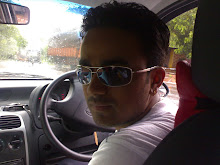Introduction: The Oracle Applications is an ERP, which was developed by the
Oracle Corp and was used by the several companies to utilize several resources
contained with them.
Oracle Applications is designed for the Financial and Manufacturing clients. The
categories in the modules are given below.
Financial Modules: Account Payables, Account Receivables, General Ledger and Fixed
Assets.
Manufacturing Modules: Purchasing, Inventory, Bill Of Materials, Work in Progress and
Order Management.
In HRMS we maintain all the details of the employee as well as the organization details.
Module: It is a collection of forms and reports which are related to particular business
process.
Purchase order module has the forms and reports which are related to the purchasing
business process. It contains nearly 50,000 tables they are accessed by only purchase
order module.
Clover Infotech
Oracle Apps OverView
Posted by Oracle Application 11i Techno-Functional Consultant at 5:17 AM 0 comments
ERP: Enterprise Resource Planning || AIM (APPLICATION IMPLEMENTATION METHODOLOGY)
ERP: Enterprise Resource Planning
Here Resource means 5 m’s
1. Money
2. Man power
3. Machinery
4. Material and
5. Management
ERP Purpose: Planning for proper utilization of resources for a business organization .
ERP as a Product : all objects(i.e. forms, reports )and all other programs are
developed and throwly tested and those will be provided with these ERP.
Methodology : the process used to implement ERP Product for a business Organization.
AIM (APPLICATION IMPLEMENTATION METHODOLOGY):
Methodology for Oracle Apps is AIM(Applications Implementation Methodology)
Phases in Aim Methodology:
1. Definition Phase
2. Operational Analysis Phase
3. Solution Design Phase
4. Build Phase
5. Transition Phase
6. Production Phase
1. Definition Phase: Here the functional consultants prepare the sample structure
(Blue Print) for the real business by gathering the information.
2. Operational Analysis phase: In this the functional consultant prepare BR100
(Business Requirement).
3. Solution Design Phase: here the functional consultant will prepare MD50 by using
BR100. MD50 is the functional document.
4. Build Phase: here the technical consultant converts MD50 to MD70. MD70 is the
technical document. Then the technical consultant prepare the final object and go
with testing, i.e. Unit Testing.
5. Transition Phase: here SIT(System Integration Testing) and UAT(User
Acceptance Testing) is done. Functional consultant does SIT. After this the
functional consultant will train the user in oracle apps product and user does UAT.
If it is satisfied by the user, it is sign off and product will be given to the user.
6. Production phase: loading the project in the client place. Where the server of
oracle apps in the client place.
Clover Infotech
Posted by Oracle Application 11i Techno-Functional Consultant at 5:13 AM 0 comments
